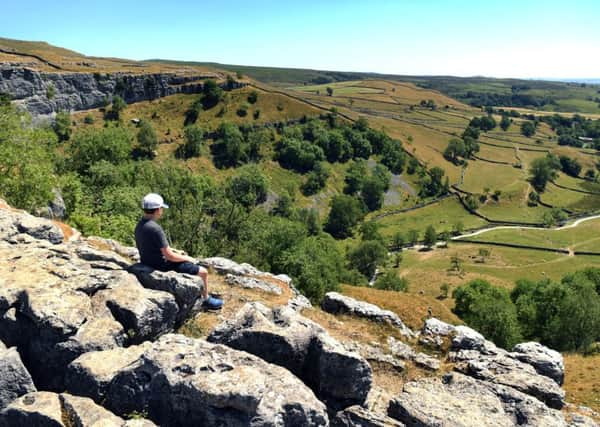The amazing Yorkshire view which was millions of years in the making


Formed along the line of the Middle Craven Fault, Malham was once covered with huge sheets of ice but as the milleniums have passed, it has been eroded backwards from the line of the fault through melting glaciers.
Water now flows underground but there was once a massive waterfall that flowed over the Cove. Frozen ground meant the waterfall made a dramatic but temporary reappearance back in December 2015.
Advertisement
Hide AdAdvertisement
Hide AdThese days the area is a magnet for walkers, as well as climbers keen to challenge themselves on the sheer rock face.
This popularity has helped make Malham Cove the most photographed location in Yorkshire when judged on the number of pictures uploaded to social media site Instagram and in the top ten nationally.
The only other regional location to make the top ten in a study done earlier this year was Brimham Rocks, which is also in North Yorkshire.
Word of mouth is obviously growing about the beauty of Malham Cove - visits to Malham National Park Centre have increased from 88,000 five years ago to more than 116,000 last year.
Advertisement
Hide AdAdvertisement
Hide AdBut its popularity - further cemented for being used as a location in both Harry Potter and the Deathly Hallows - Part 1 and BBC comedy The Trip - occasionally comes at a cost.
The village of Malham is said to be the most congested of any in Britain’s national parks and on Easter Bank Holiday weekend this year traffic came to a standstill, with long tailbacks of visitors making their way up towards the cove as some visitors blocked the narrow roads with their parking.
But while better traffic management may be required on the busiest days, there is little prospect that this stunning spot’s popularity will wane any time soon.
Technical information: Nikon D5 camera, 24mm lens, exposure 1/200thsec @ f5, ISO 100.